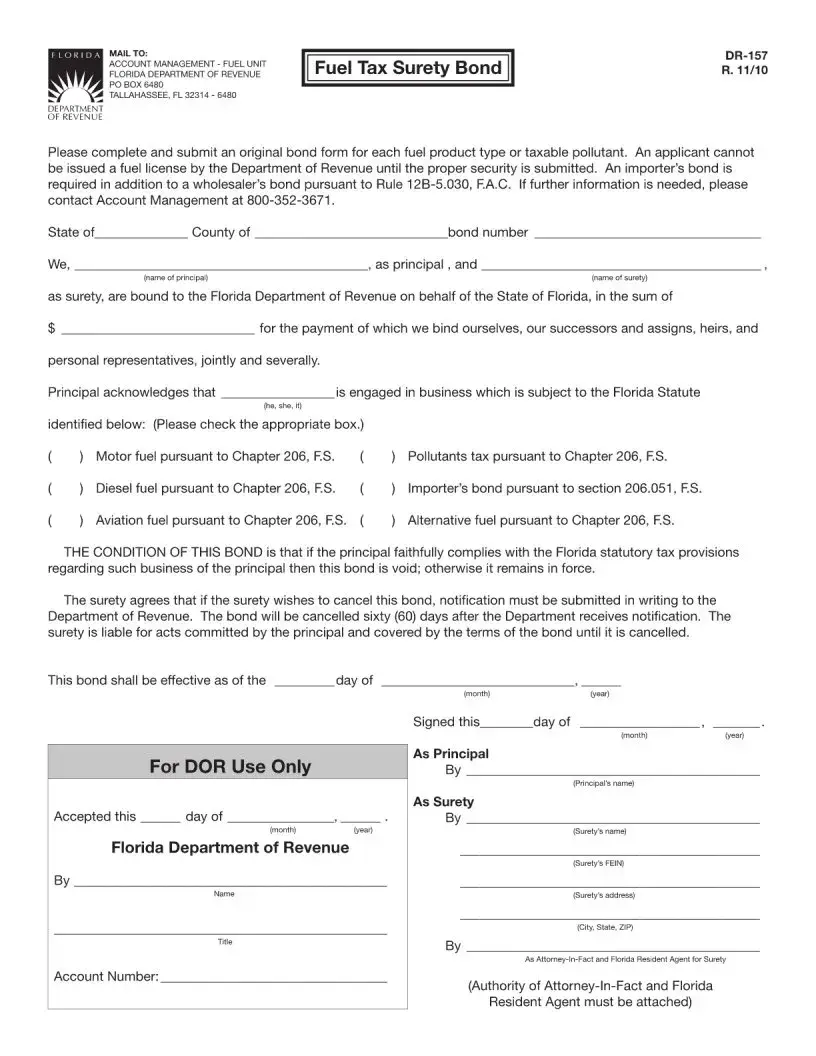What is the Florida DR-157 form?
The Florida DR-157 form, also known as the Notice of Sale and/or Bill of Sale for a Motor Vehicle, Mobile Home, Off-Highway Vehicle or Vessel, serves as a combined notice of sale and a bill of sale document. This form is used by sellers in Florida to officially notify the Department of Highway Safety and Motor Vehicles (DHSMV) about the sale of a vehicle, mobile home, off-highway vehicle, or vessel. It securely documents the transfer of ownership from the seller to the buyer, providing essential details about the transaction.
When should the Florida DR-157 form be used?
Use the Florida DR-157 form immediately after the sale of a motor vehicle, mobile home, off-highway vehicle, or vessel takes place in the state of Florida. Filing this form promptly is crucial as it helps to officially record the change of ownership and can protect the seller from liability for any subsequent use or condition of the item sold. Timing plays an essential role in ensuring both parties are safeguarded and the state records are accurately updated.
Where can I obtain the Florida DR-157 form?
The Florida DR-157 form is available on the website of the Florida Department of Highway Safety and Motor Vehicles (DHSMV). Here, individuals can download the form as a PDF document. Additionally, the form may be available at local tax collector's offices and other authorized agencies throughout Florida. These locations can provide physical copies of the form for those unable to access or print the online version.
What information needs to be included in the Florida DR-157 form?
Filling out the Florida DR-157 form requires accurate and complete information regarding the transaction. This includes the date of sale, detailed descriptions of the vehicle, mobile home, off-highway vehicle, or vessel being sold (such as make, model, year, title number, and identification number), the sale price, and personal information about both the seller and the buyer (names, addresses, and signatures). Ensuring all details are correctly provided is fundamental for the validity of the form.
How is the Florida DR-157 form submitted?
After correctly and fully completing the Florida DR-157 form, it must be submitted to the Florida Department of Highway Safety and Motor Vehicles (DHSMUTV). The submission can be done either by mail or in person at a local tax collector's office. It is important to check the most current instructions and addresses for submission on the DHSMV website or at a local office, as these can change over time.
Is there a fee associated with filing the Florida DR-157 form?
Typically, there is no fee required to submit the Florida DR-157 form for notifying the state about the sale of a vehicle, mobile home, off-highey vehicle, or vessel. However, other transaction-related fees may apply depending on the specific circumstances of the sale or transfer. Always verify with the DHSMV or local tax collector's office for the most current information on fees.
What are the legal consequences of not filing the Florida DR-157 form?
Failing to file the Florida DR-157 form can have significant legal implications for the seller. If the form is not submitted, the seller might be held liable for any citations, accidents, or liabilities incurred by the new owner using the vehicle, mobile home, off-highway vehicle, or vessel. This liability can extend until the new ownership is officially recorded, underscoring the importance of filing the form as soon as the sale is finalized.
Can the Florida DR-157 form be corrected if an error is made?
If an error is made while completing the Florida DR-157 form, it is important to address the mistake promptly. Corrections can usually be made by submitting an amended form or, depending on the nature of the error, contacting the Florida Department of Highway Safety and Motor Vehicles directly for guidance. Providing accurate information is crucial, and correcting errors quickly helps maintain the integrity of the transaction and ownership records.
